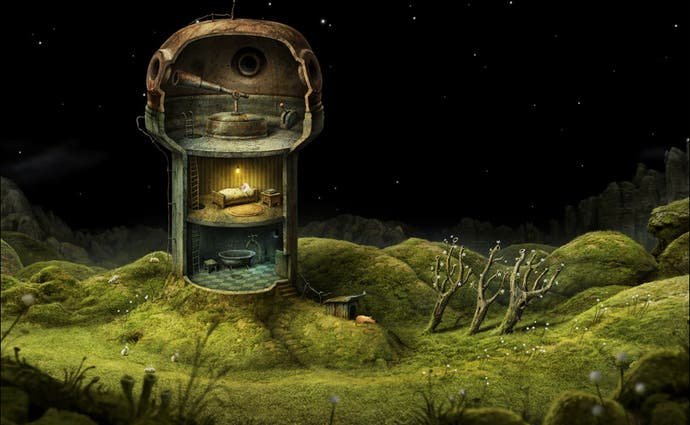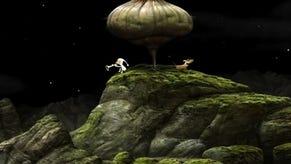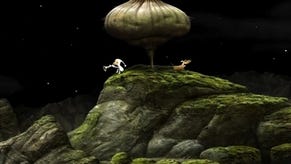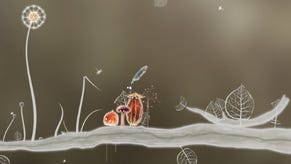Samorost 3 review
Space oddity.
Arguably the most appealing aspect of point-and-click adventures is not solving the puzzles themselves - though they're often a joy - but that moment something whirs into life. Where you're tinkering around with a mechanical puzzle and a new animation triggers. Progress! It's a strange genre that way, in which the smallest victory can feel earth-shattering. "You're about to see something new!" these games signal to you the moment you've thought your way out of a rut. And who better to whisk you off to a new realm than Amanita Design, the visually arresting game design and animation studio behind Machinarium and Botanicula?
The Czech studio revels in its art direction and animation. Though strictly set in a fantasy realm, this latest cosmic adventure about a space-travelling gnome adheres to the ubiquitous Gene Roddenberry dream "to explore strange new worlds, to seek out new life and new civilisations". Each and every background, creature, and animation is lavishly detailed in an arresting mish-mash of what looks like (but isn't) stop-motion puppetry with 2D animation. From otherworldly mossy groves, to ancient hollows hurtling through space, to quirky caverns of ambrosial insects, there's never any telling what Amanita has in store for you, but you know it's going to look stunning.
While the visuals are consistently inventive, Samorost 3's design as a point-and-click adventure is noticeably less novel. After Botonicula eschewed genre conventions by making its progress-gating puzzles light and breezy, Samorost 3 - a return to the series of student games Amanita made back in the day - is a little more traditional in its paces. Your inventory may be limited to a scant few items, but the brain-teasers are back in full force. They run the gamut from clever to frustrating, with each riddle based on a piece of cryptic logic or observations, but by default these mental challenges remain shrouded in a haze of pixel-hunting and guesswork.
Thankfully, Samorost 3 includes an ingenious hint system that vastly improves the pacing without pandering to the player. Each screen has an accompanying journal entry associated with it that offers vague diagrams gently guiding you to a puzzle's solution. What's brilliant about these journal entries is that they're a puzzle themselves. Resembling the sort of cryptic archaeological notes you'd expect to find in Indiana Jones or Nathan Drake's pocket, these illustrations don't spell out the answers, so much as they provide an accessible entry point. It's a splendid solution that preserves a fiendish challenge for masochistic players, while offering a chance for everyone else to roleplay as an archaeologist picking up on someone else's trail. Personally, I usually love beating my head against a wall until a solution clicks into place, but, in this instance, frequently consulting the notebook to sort out the meaning of its doodles resulted in a more engaging, better-paced experience.

Despite this, Samorost 3's flow can still be more languid than it should be. Amanita is an incredible animation studio, but having to rewatch lengthy sequences in which your pyjama-clad avatar takes off in his spaceship every time you want to toggle between locations can grate. The walking speed is generally pretty swift, but there are definitely times where to-ing and fro-ing it through the cosmos can take its toll.
Like previous Amanita games, Samorost 3 is completely devoid of words. The characters rarely speak, and when they do it's in a made-up language. Amanita's commitment to non-verbal storytelling is commendable, as it effortlessly preserves the mystification of this peculiar galaxy. The one place where Samorost 3's narrative beats suffer is in its overly traditional third act. Simply guiding our gnome through various peculiar worlds is a pleasure in and of itself, so saddling him with a more concrete story arch towards the end felt disappointingly ordinary. Or maybe I just didn't find the villain as interesting as everything else in the game.
Samorost 3 doesn't reinvent the archaic genre it stubbornly sticks to, but it knows how to make it sing. Amanita Design's craft is breathtaking on a surface level and it pairs well with a format that drip-feeds content in small, concentrated bursts. The puzzles may not be particular inspired, but the developer has found a way to present them in a more inviting manner than we're used to. Beautiful, bold, and quietly forward-thinking, Samorost 3 is a pleasant romp, if not a particularly memorable one.







